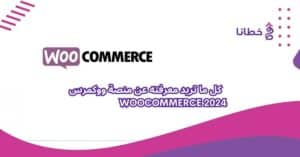table of contents
The Saudi market is witnessing rapid growth in the e-commerce sector, with recent data showing a significant increase in sales volume and revenue generated from this sector. This development represents a significant opportunity for Saudi companies and establishments to expand their operations and enhance their contribution to sustainable economic development.
The steady growth of e-commerce in Saudi Arabia:
According to a report prepared by the Saudi Business Support Sector Observatory, the volume of e-commerce in Saudi Arabia has increased significantly in recent years. The volume of e-commerce in Saudi Arabia is estimated at $13.61 billion in 2024, and the annual revenue growth rate of the Saudi e-commerce market is expected to increase by up to 15.01% annually. Total e-commerce revenue in Saudi Arabia is expected to reach $27.37 billion by 2029.
Factors driving the growth of e-commerce in Saudi Arabia in recent years
This growth is attributed to factors such as the spread of the internet and the increasing number of online shoppers in the Kingdom. There are several key reasons for the growth of e-commerce in Saudi Arabia:

1- The increasing use of the Internet and smartphones is one of the most important factors in e-commerce in Saudi Arabia:
- In 2023, the percentage of internet users in Saudi Arabia reached about 95% of the population.
- The increasing prevalence of smartphones, which are an essential tool for online shopping.
2- The demographic transformation of e-commerce in Saudi Arabia:
- The percentage of young people in Saudi Arabia is high (more than 50% of the population is under the age of 30).
- Young people are the most frequent users of technology and online shopping.
3- Developing digital infrastructure:
- Major investments in digital infrastructure such as 5G networks and logistics.
- Developing electronic payment platforms and digital banking services.
4- Supporting the government and legislation:
- Government initiatives to promote digital transformation and develop the e-commerce sector.
- Issuing legislation and regulations regulating online buying and selling operations.
5- Increased confidence in online shopping:
- Increased use of trusted apps and websites.
- Improved delivery and secure payment services.
These factors combined have contributed to the significant growth of the e-commerce sector in Saudi Arabia in recent years.
E-commerce revenues in Saudi Arabia support sustainable development:
- These revenues are used to fund sustainable development initiatives in the Kingdom, such as digital infrastructure and technological innovation.
- The rise in e-commerce revenues has contributed to strengthening the Saudi economy and creating new job opportunities.
Increasing e-commerce revenues in Saudi Arabia can significantly contribute to achieving the Kingdom’s sustainable development goals in several ways:
1- Financial and digital inclusion:
- Enabling the largest segment of society to access financial and commercial services online.
- Increasing the rates of economic and social integration of marginalized groups.
2- Providing job opportunities:
- The growth of the e-commerce sector is creating new job opportunities in marketing, logistics, technology, and other fields.
- Enhancing women’s participation in the labor market through remote work.
3- Development of small and medium enterprises:
- Online platforms provide opportunities for small businesses to reach new markets.
- Stimulating innovation and entrepreneurship in the technical and commercial sectors.
4- Environmental sustainability:
- Reduced carbon footprint due to reduced traffic and reduced paper consumption.
- Promoting the circular economy through the reuse of products and materials.
5- Social development:
- Improving the quality of life by providing goods and services more easily and conveniently.
- Providing more opportunities to participate in economic and social activities.
Therefore, it can be said that the success of e-commerce in Saudi Arabia contributes significantly to achieving the goals of economic, social, and environmental sustainable development.
Why is Khutana E-Marketing and SEO the best company for your e-commerce business?
Khutana Company for e-marketing services, search engine optimization for your website, and brand enhancement relies on pioneers in the field of e-marketing who are skilled in:
1- E-marketing from Khutana E-marketing:
- They help you reach your target audience through the right digital channels.
- They will create engaging and valuable content to attract potential customers.
- They help you create an effective online marketing strategy.
2- Search Engine Optimization (SEO) from Khutana E-marketing:
- They will optimize your website content to improve its ranking in search results.
- They ensure that your website is easy to discover and navigate by users.
- They help you analyze your site’s performance and identify opportunities for improvement.
3- User experience from khutana e-marketing:
- They work on improving your website design and user interface.
- They provide recommendations to increase customer retention and conversion.
- They ensure that the purchasing and browsing process is easy and smooth.
4- Analysis and reports from khutana e-marketing efforts:
- They provide periodic reports on findings and recommendations for continuous improvement.
- They provide you with in-depth analytics on your e-commerce performance.
It’s the perfect choice to enhance your khutana e-commerce business. To contact Khutana, click on the following link: https://khutana.com
Challenges and future opportunities for e-commerce in Saudi Arabia:
- There are promising opportunities for expanding e-commerce in Saudi Arabia, such as mobile shopping and developing digital infrastructure.
- Despite strong growth, there are still some challenges such as cybersecurity and online shopping culture.
Challenges of e-commerce in Saudi Arabia:
1- Technical infrastructure:
- The need for further development of internet infrastructure and logistics infrastructure.
- Poor coverage and speed in some areas.
2- Trust and security:
- Consumer concerns about the security and privacy of online transactions.
- The need to enhance trust in online platforms and stores.
3- Legislation and regulation:
- The need for a unified and comprehensive regulatory framework for the e-commerce sector.
- Restricting certain activities and products in certain sectors.
4- Behaviors and preferences:
- Some resistance to online shopping due to traditional buying habits.
- The need to raise digital awareness and skills.
E-commerce opportunities in Saudi Arabia:
1- Accelerated growth:
- Increasing penetration rates of the Internet and smart devices.
- Rising e-commerce spending.
2- Digital transformation:
- The government and private sector are moving towards digital transformation.
- Accelerating digital applications and solutions.
3- Financial and digital inclusion:
- Providing new opportunities for marginalized groups and women.
- Promoting innovative financial services.
4- Innovation and entrepreneurship:
- The spread of e-commerce platforms and logistics solutions.
- Growing entrepreneurship culture, especially in the technical fields.
By addressing these challenges and realizing opportunities, e-commerce in Saudi Arabia can achieve sustainable growth and development.
Key steps companies can take to boost trust in e-commerce in Saudi Arabia
There are several key steps companies can take to boost confidence in e-commerce in Saudi Arabia:
1- Enhancing security and privacy:
- Applying best practices in managing and protecting customers’ personal data.
- Adherence to regulatory standards and permits in the field of privacy.
- Use security certificates and encryption for payment transactions.
2- Transparency and disclosure:
- Provide clear information about the company, products, and policies.
- Providing reliable information about the quality and characteristics of products.
- Disclosure of return and warranty policies.
3- Improving customer service:
- Ensuring continuity and reliability in fulfilling customer requests.
- Provide easy and effective communication channels for customer support.
- Quick response to customer complaints and inquiries.
4- Building reputation and brand:
- Investing in marketing and advertising campaigns to enhance the mental image.
- Obtain quality certificates and reliable accreditations.
- Encourage positive customer feedback.
You can read more about: Managing your online brand reputation and maintaining a positive image.
5- Investing in technical infrastructure:
- Ensuring reliable shipping and delivery services.
- Using smart solutions to improve customer experience.
- Develop secure and user-friendly platforms.
Through these steps, companies will be able to build customer trust and encourage wider adoption of e-commerce in the Saudi market.
The best ways Saudi companies can improve the customer experience in e-commerce.
There are several best practices that Saudi companies can follow to improve the customer experience in e-commerce:
1- Design an easy-to-use user interface:
- Ensure the website is compatible with all devices and systems.
- Establish a clear organizational structure for the website.
- Simplify shopping and browsing.
2- Providing comprehensive and reliable information:
- Provide rich content that helps customers make decisions.
- Clearly post shipping, payment, and return policies.
- Include full details of products and services.
3- Providing high-quality customer service:
- Prompt and professional response to customer inquiries.
- Providing various channels to communicate with customers.
- Handling customer complaints effectively and fairly.
4- Personalize customer experience:
- Allow customers to customize their products according to their needs.
- Providing personalized recommendations to each client.
- Analyzing customer behavior and preferences.
5- Developing after-sales services:
- Provide effective after-sales services to maintain customer loyalty.
- Follow up with customers after purchase to get their feedback.
- Offer clear warranties and return policies.
By implementing these practices, Saudi companies will be able to improve customer experience and increase e-commerce satisfaction. Conclusion: The future of e-commerce in Saudi Arabia points to promising prospects, as the sector continues its rapid growth and its revenues contribute to supporting sustainable development in the Kingdom. By addressing challenges and capitalizing on available opportunities, Saudi companies will be able to strengthen their position in this thriving sector.
Questions about the article “The Future of E-Commerce in Saudi Arabia: A Bright Future 2025”
What is the future of the e-commerce industry?
Advanced technologies are revolutionizing the way buyers discover products and services, whether their experiences are digital, virtual, or physical. Product discovery can occur anywhere, and data-driven insights are used to increase conversion profitability.
What is the trend of e-commerce in Saudi Arabia?
The e-commerce market is expected to reach 19.3 million users by 2029. User penetration will reach 32.4% in 2025 and is expected to reach 49.4% by 2029. The average revenue per user (ARPU) is expected to reach $1.37 thousand.
What is the future of the Saudi economy?
The economy recorded an average annual growth of 2.3% in the decade ending in 2024. The COVID-19 pandemic caused a sharp contraction, but recovery was underway by 2022, driven by the lifting of pandemic restrictions and successful economic diversification efforts that strengthened the non-oil economy.
Which of the following is the future of e-commerce?
The future of e-commerce lies in the seamless integration of automated technologies. These systems optimize operations and budgets, reduce human error, and increase the quality and speed of customer service while facilitating scalability without the need for additional human resources.
What is the future of e-commerce in 2030?
By 2030, social commerce will become a major driver of online sales, with platforms like Instagram, Facebook, and TikTok offering integrated shopping features. Influencer marketing and user-generated content will play a crucial role in driving product discovery and purchasing decisions.














































